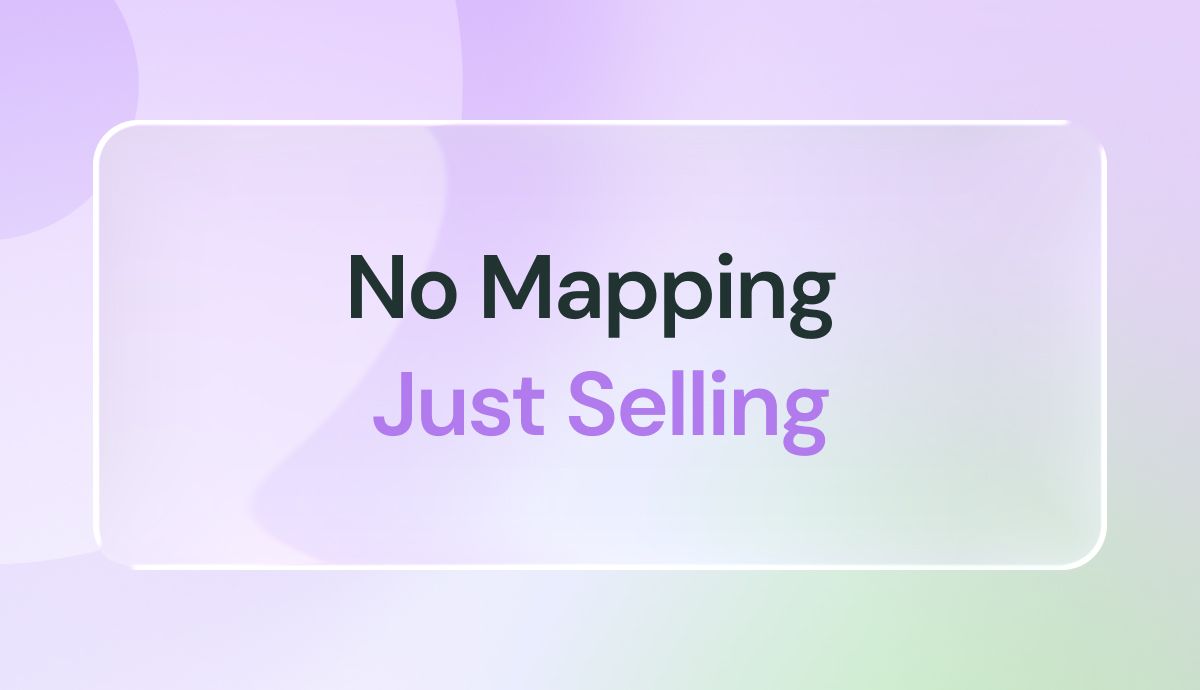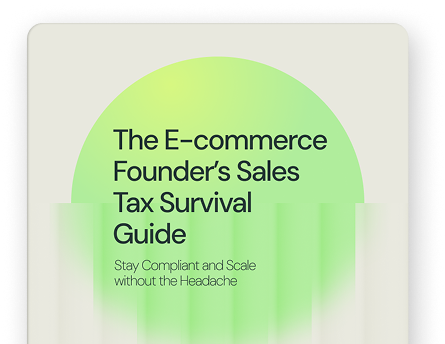How to Automate Sales Tax in Ecommerce: Tools, Tips, and Best Practices
24 September

Ready to automate your sales tax?
Sign up for free
Connect your ecommerce store to a sales tax compliance solution, enable state filings, reconcile marketplace vs. direct sales, and set threshold alerts to stay audit-ready. A sales tax automation engine is an all-in-one solution for your sales tax woes.
Sales tax is the silent growth killer for ecommerce founders. You have to deal with over 12,000+ jurisdictions, changing state rules, deadlines, and their complexities. One month, you're crossing a new nexus threshold; the next, you're chasing exemption certificates and reconciling marketplace reports. Then, you find yourself praying you didn't misclassify an SKU.
A simple mistake can snowball into penalties or, worse, trigger an audit. The good news: you don't have to juggle this alone. On this page, you'll learn exactly how to tame sales tax and stay compliant with ease.
7 Steps To Automate Your Ecommerce Business
Turn busywork into growth with confidence. Here are seven steps to automate your ecommerce operations. Follow them to reduce errors and free your team to focus on revenue.
1. Choose a sales tax automation platform
Start by choosing a sales tax automation tool designed for your business. Choose one that matches your stack (Shopify/Amazon/ERP) and growth plan.
The sales tax software should be accurate, scalable, and audit-ready from day one. Most importantly, it should integrate seamlessly into your existing platforms. With the right tool, automating your ecommerce sales tax is seamless.
We will share with you the factors to consider to find the best sales tax compliance solution in the next section.
2. Map your sales tax obligations
Next, list every state you ship to, note physical ties, and track economic thresholds you've crossed. You should separate sales channels (Shopify, Amazon, wholesale) and mark which transactions are marketplace-collected and seller-collected.
Build a jurisdiction matrix with address-level rates, filing frequencies/due dates, and registration status per state. Then, create a SKU taxability map and link resale/exemption certificates to customers. Feed this map into your automation tool so it can calculate, collect, and file accurately while alerting you to new obligations.
With an automation engine, the process is easier and faster. Sales-tax automation ingests your transaction data, geocodes every ship-to address, and instantly assigns the correct state, county, city, and special-district rates. It overlays that map with your nexus profile to flag where you’re legally required to collect.
3. Consolidate sales data sources
Sales tax automation software connects to all your sales channels via secure APIs. It stores data from your marketplaces, POS, and invoicing apps in a single cloud ledger. Duplicates and errors are flagged automatically. So, every transaction is clean before calculations run. Also, you get a centralized dashboard, eliminating the need to juggle spreadsheets from different systems.
4. Configure product taxability
Configuring product taxability ensures every SKU is taxed correctly across states. This prevents under- or over-collection, avoids penalties, and keeps filings consistent with state rules. Unfortunately, this can be a tedious process, but automation software makes this easy.
Just upload or sync your SKU catalog, and the automation engine’s AI will match each item to the correct category. It will also link those categories to every state’s tax laws for accuracy, as some SKUs are taxable in one state but not in others. As laws change, the system updates its category-to-rate map, keeping your product taxability accurate without constant re-coding.
5. Import & validate exemption certificate
Import the exemption certificates into the sales tax automation tool. Most sales tax engines allow for bulk uploads for convenience. Automation tools also match each certificate to the correct customer and link it to the right SKUs/invoices. Most importantly, automation software will notify you when certificates are expiring to keep you compliant.
6. Turn on nexus monitoring
Connect your data to the tool and enable nexus monitoring. Sales tax automation engines will automatically track economic nexus thresholds. They will use your transaction data and alert you when you need to register or file.
7. Enable auto-filing and remittance
In most sales tax systems, auto-filing and remittance are not automatically enabled. So, make sure to check how the tool you plan to use handles this. You may need to connect your data source, confirm nexus and permits per state, add payment details, and review a pre-file liability. In some sales tax automation tools, you only need to do this in the first filing.
What To Look For When Choosing the Right Sales Tax Automation Solution For Your Ecommerce Business
Choosing a sales tax automation tool comes down to fit, accuracy, and ease. The best choice will make the entire compliance process simple. Learn the must-have features of the best sales tax automation software.
Accuracy & Guarantee
It should deliver address-level rate accuracy and apply the appropriate tax rules. Look for an accuracy guarantee and error protection. This ensures that errors don't become your problem.
Plug-and-Play Integration
It should connect to Shopify, Amazon, Stripe/PayPal, and your ERP without custom code. No-code integration reduces setup time and eliminates sync errors.
Robust Exemption-Certificate Workflows
The tool must collect, validate, expire-track, and store certificates with searchable audit trails. Automatic checks (required fields, IDs, dates) prevent invalid exemptions from slipping through.
AI-Powered Product Taxability
AI should classify SKUs to the correct tax categories across states and flag edge cases (e.g., bundled items, tax holidays). This cuts manual mapping and reduces misclassification risk.
Stop stressing over sales tax—let automation handle it. Let Kintsugi do the job!
End-to-End Coverage
It should handle calculation, registration guidance, filing, remittance, marketplace reconciliation, and audit exports. One system means fewer gaps, fewer vendors, and cleaner compliance.
Transparent / Predictable Pricing
Flat or tiered pricing beats per-transaction surprise fees as you scale. Make sure filings, amendments, and support are included in your plan. Make sure the sales tax automation provider offers transparent pricing before you commit.
Responsive Customer Support
You need fast answers from tax-literate humans via chat/email/phone, not ticket limbo. So, the sales tax automation provider should have reliable and responsive support. Sales tax deadlines are unforgiving and rules change fast. A reliable support lets you fix calculation, filing, or credential issues before the cutoff, preventing penalties, notices, and audits.
Scalability
The system should handle spikes (launches, holidays) and multi-state growth without re-architecture. Look for a tool with multichannel support. Your sales tax automation tool should let you grow your business without worries.
Here are the top 10 Ecommerce sales tax solutions in the market.

How to Automate Sales Tax with Kintsugi
Kintsugi's no-code integration lets you connect your existing ERP, HR, and ecommerce platforms to the tool without stress. No dev work, no manual SKU mapping. Setting up your Shopify store with Kintsugi is fast and convenient.
Onboarding is effortless. Connect your channels, confirm nexus states, import SKUs and any existing exemption certificates, then review a pre-file summary. Yes, no need for manual data entry.
Kintsugi's AI maps product taxability, tracks economic/physical nexus, and calculates rates accurately. It also captures and validates exemption certificates.
Enable auto-filing and remittance per state with approval rules. Kintsugi files on schedule with full audit trails.
Its clean dashboard displays threshold alerts, key details, and due dates in one place. With this, you can manage compliance at a glance.
Learn more about Kintsugi – the AI that monitors exposure, files returns, and optimizes your sales tax automatically.

Catherine Armecin Martin
Cath is a content writer for marketing at Kintsugi. She graduated with a degree in Computer Science at the University of the Philippines Cebu. Her passion for writing paved the way for a career shift from writing codes to copywriting. She also writes web content and news articles. She has contributed to several online media publishing, including International Business Times, The List, and Game Rant. Cath is an avid reader and writer committed to continuous learning and personal growth. She views herself as a work in progress, always open to new insights and experiences. Passionate about sharing knowledge, she strives to inform, inspire, and contribute positively to those around her.
Ready to automate
your sales tax?
2261 Market St,
Suite 5931
San Francisco, CA 94114
Resources
US State Sales Tax GuidesCanada Province Sales Tax GuidesUS City Sales Tax GuidesFree Exposure (Nexus) StudySecurity & PrivacyBlogAPI ReferenceKintsugi Status2261 Market St,
Suite 5931
San Francisco, CA 94114


